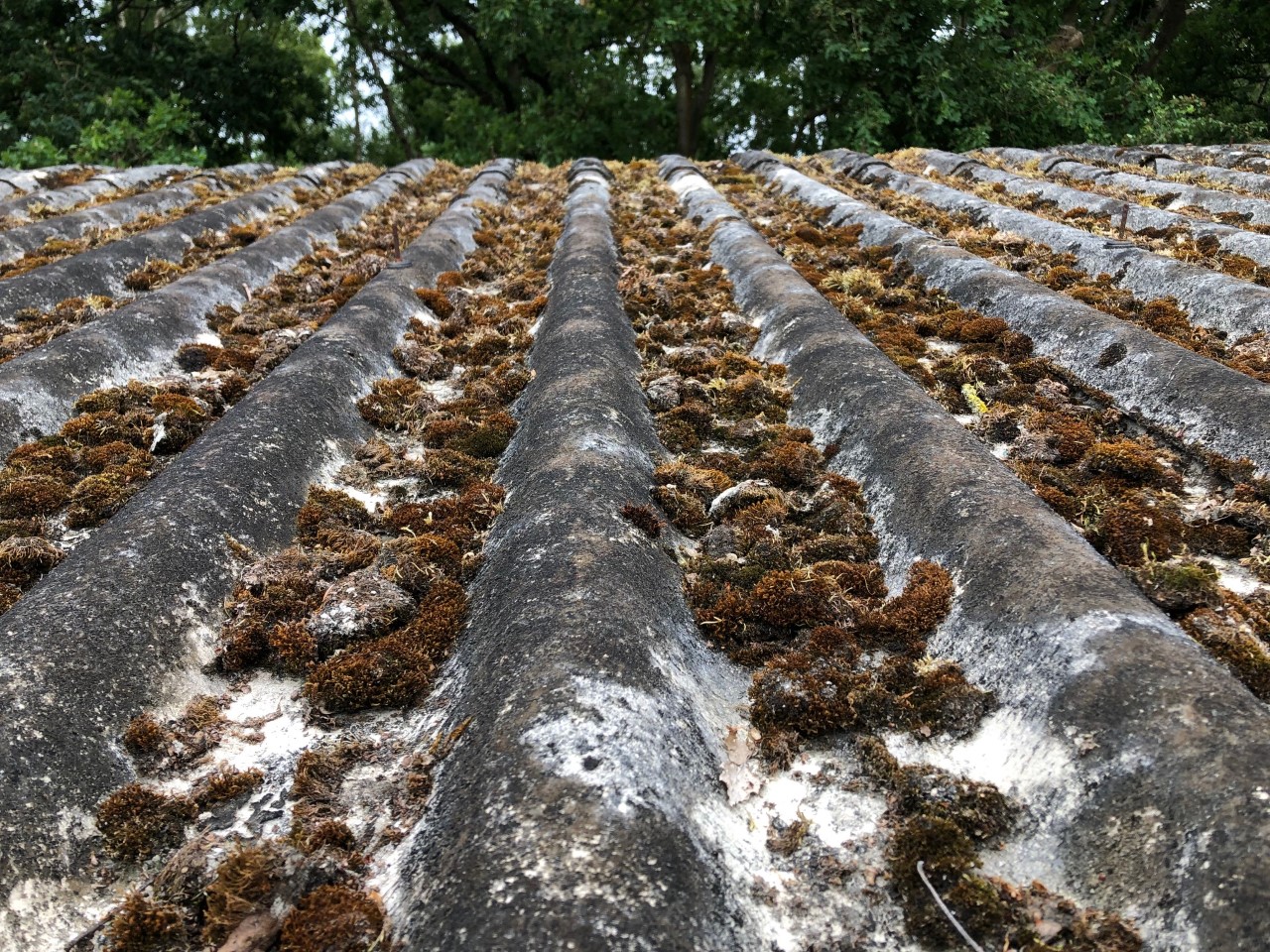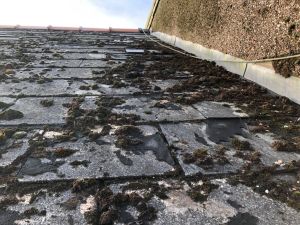Asbestos Disposal Advice
Last Updated on 4 July 2023
We have written a blog surrounding asbestos disposal as it’s a topic that often arises. We would probably divide the approach into two sections – Domestic and Commercial.
Commercial Property Asbestos Disposal
For commercial asbestos waste, all the handling and disposal is generally conducted by licensed or appropriately trained contractors and carriers.
They should be able to provide all the requisite documentation for handling, transport and the final destination.
Furthermore, there are a number of approved tipping facilities in the UK, and all asbestos waste will be recorded with appropriate certification.
Reputable contractors should explain the process clearly and provide a certified record for safe keeping and inspection by relevant authorities such as the council, HSE or the Environment Agency.
Any removal of asbestos should instigate an update to the asbestos management plan and site record keeping for none domestic (commercial properties).
For any none domestic property built prior to 2000 (asbestos was banned in the UK in late 1999), it should have some form of asbestos register or survey.
Furthermore, If asbestos is present, there is a legal duty to manage the material, and this generally done through an asbestos management plan (AMP).
Domestic Property Asbestos Disposal
The question of asbestos disposal often arises more commonly around asbestos emanating from domestic properties such as garage roofs, floor tiles etc.
Remember, however, that if you employ a contractor to remove asbestos from your home, it is automatically ‘commercial waste’ because you paid a contractor to carry out the work, even if they are self employed.
If you employ a contractor to undertake any asbestos removal or remedial work that generates asbestos waste, then they should abide by the information provided earlier in the blog.

A typical corrugated asbestos garage roof typically found in older properties
Next, some questions often arising about the disposing of asbestos waste are as follows:-
Where should asbestos waste be stored?
Asbestos waste should only ever be stored in approved skips, containers or at a licensed facility.
Can I take asbestos waste to the dump?
Asbestos waste can be taken to the dump, but only with prior permission from the licensed facility or council refuse site.
How do you dispose of asbestos roofing?
Disposal of asbestos roofing should either be undertaken by an appropriately trained individual or contractor, or through a local council facility.
Some council facilities will not accept asbestos waste, and some put restrictions on the amount you can take before you need to pay. (Always check first).
You or the contractor could also deposit asbestos at a site licensed to take asbestos with their permission.
If you are handling or transporting asbestos waste, it is vitally important to follow all safety information and guidance.
The local council may provide some limited advice, but it is better to consult a professional or the HSE guidance document https://www.hse.gov.uk/pubns/guidance/em9.pdf
This document will give advice on how to handle and bag up asbestos, and where to dispose of asbestos.
Asbestos bags are sometimes supplied by your local council, or can be purchased online from reputable organisations for disposing of asbestos waste.

Asbestos roof tiles must be disposed of correctly at a licensed facility
What are the regulations for asbestos disposal in the UK?
In the UK, asbestos disposal is regulated by the Control of Asbestos Regulations 2012. These regulations set out specific requirements for the safe and legal disposal of ACMs. Some key regulations include:-
-
Disposing of ACMs at Licensed Sites:
Asbestos must be disposed of at a licensed waste disposal site that is authorised to accept this type of waste. These sites are regulated by the Environment Agency in England, the Scottish Environment Protection Agency (SEPA) in Scotland, and the Natural Resources Wales (NRW) in Wales.
-
Packaging and Labeling:
Asbestos waste must be properly packaged and labeled to ensure safe handling and transportation. ACMs must be double-bagged in heavy-duty plastic bags that are specifically designed for disposing of asbestos, and the bags must be clearly labeled with warning signs indicating that they contain asbestos.
-
Transport and Transportation:
Asbestos waste must be transported by a registered waste carrier using a suitable and licensed vehicle. The vehicle must have the necessary permits and documentation for transporting asbestos waste, and it must be properly sealed and labeled during transportation.
-
Documentation and Record Keeping:
If you are disposing asbestos waste then you must keep records, including details of the waste carrier, the site disposed at, and quantities of the waste, must be kept for at least two years and be available for inspection upon request.
-
Duty of Care:
Duty holders, including employers and building owners, have a legal obligation to ensure that asbestos waste is properly disposed of in accordance with regulations and that all relevant paperwork is completed and maintained.
It is important to note that regulations and requirements for asbestos disposal may vary depending on the location and type of asbestos-containing materials (ACMs) being disposed of. Therefore, It is crucial to comply with the specific regulations and guidelines outlined by the appropriate regulatory bodies in your area to ensure safe and legal disposing of asbestos.
Finally, hiring a licensed contractor for removing and disposing asbestos is often recommended to ensure compliance with regulations and minimise health and environmental risks.
Where can I find a licensed asbestos disposal facility near me?
To find a licensed asbestos disposal facility near you in the UK, you can follow these steps:-
-
Check with your local council or waste management authority:
Your local council or waste management authority may have information about licensed disposal facilities in your area. Furthermore, they may have a list of authorised waste disposal sites or be able to provide guidance on how to locate them
-
Search online:
You can use online search engines to find licensed disposal facilities near you. Use keywords such as “licensed asbestos disposal facility” along with your location or postcode to narrow down the search results.
-
Contact environmental agencies:
In the UK, the Environment Agency in England, the Scottish Environment Protection Agency (SEPA) in Scotland, and the Natural Resources Wales (NRW) in Wales are the regulatory bodies responsible for managing waste disposal. Specifically, that includes asbestos. You can contact these agencies directly or visit their websites to search for authorised disposal facilities in your area.
-
Consult with licensed asbestos removal contractors:
Licensed removal contractors are familiar with the regulations and may have information about licensed disposal facilities in your area. In addition, they can provide guidance and recommendations based on their expertise and experience.
-
Seek professional advice:
If you are unsure about how to locate a licensed asbestos disposal facility near you, it is advisable to seek professional advice from qualified consultants, waste management experts, or environmental agencies for accurate and up-to-date information.
Can you put asbestos in skips?
Yes, you can put asbestos waste in skips if it’s an appropriate ‘asbestos skip’ and it’s appropriately sealed or bagged.
Do you have to pay for asbestos disposal?
In most cases you have to pay for asbestos waste to be disposed of by the container (skip) and the weight. However, local authorities may accept small amounts of asbestos waste free of charge providing it is domestic waste from the ‘householder’ and not a commercial contractor.
Is asbestos hazardous under COSHH?
Asbestos is actually regulated under the Control of Asbestos Regulations 2012 in the UK, not under COSHH.
While COSHH covers the control of exposure to hazardous substances in general, asbestos has its specific regulations due to its unique properties and associated health risks.
Under the Control of Asbestos Regulations 2012, asbestos is classified as a hazardous substance, and it is considered a priority substance that requires strict control measures.
Moreover, the regulations aim to protect workers and others from the risks associated with asbestos exposure, which can lead to serious respiratory diseases, including lung cancer, mesothelioma, and asbestosis.
What precautions should I take when handling and transporting asbestos waste?
When handling and transporting asbestos ready for disposal, it is important to take appropriate precautions to ensure the safety of yourself and others. Therefore, some key precautions to consider include:-
-
Personal Protective Equipment (PPE):
Firstly, wear suitable PPE, including disposable coveralls with a hood, disposable gloves, and appropriate respiratory protection, such as a half-face or full-face respirator with a high-efficiency particulate air (HEPA) filter, as recommended by the Health and Safety Executive (HSE) in the UK.
-
Wetting Asbestos:
Secondly, wet the asbestos-containing materials (ACMs) with water before handling or removing them in order to minimise the release of asbestos fibres into the air. Use a gentle mist or low-pressure spray to avoid creating excessive moisture that can damage the materials or cause water runoff.
-
Minimise Breakage:
Avoid breaking or damaging ACMs during handling and transportation, as this can release asbestos fibres. Use caution when lifting, carrying, or moving ACMs in order to minimise the risk of damage.
-
Proper Packaging:
Next, be sure to double-bag ACMs in heavy-duty plastic bags that are specifically designed for asbestos disposal. Seal the bags tightly and use appropriate warning labels in order to indicate that they contain asbestos. Do not overfill bags and avoid dragging or sliding bags on rough surfaces.
-
Licensed Waste Carrier:
Use a registered waste carrier who is authorised to transport asbestos waste. Ensure that the waste carrier has the necessary permits and documentation for transporting asbestos waste, and that the vehicle used for transportation is suitable and licensed for this purpose.
-
Transport and Handling:
Handle and transport asbestos waste with care, following all relevant regulations and guidelines. Avoid creating dust or disturbing the asbestos-containing materials during transportation. Keep the waste secure and prevent any spillage or release of fibres.
-
Dispose Properly:
Dispose of asbestos waste only at licensed waste sites that are authorised to accept this type of hazardous waste. In addition, please ensure that you follow the asbestos disposal requirements of the specific disposal facility and complete all necessary paperwork and documentation as required.
-
Training and Certification:
Finally, ensure that personnel handling and transporting asbestos waste are properly trained and certified for asbestos handling and removal tasks. This may include completing relevant training courses, obtaining appropriate certifications, and adhering to the regulations and guidelines for handling and transporting asbestos waste.
Need advice on disposing asbestos?
If you need any advice on safely disposing of asbestos waste from any commercial or domestic properties that you own, maintain or control, then please contact us on 0800 141 2676, email us at info@rbasbestos.co.uk or fill in the form below.
Although we don’t remove or dispose of asbestos containing materials ourselves, we are more than happy to recommend reputable asbestos removal specialists across the UK who will be able to assist you in this matter.

